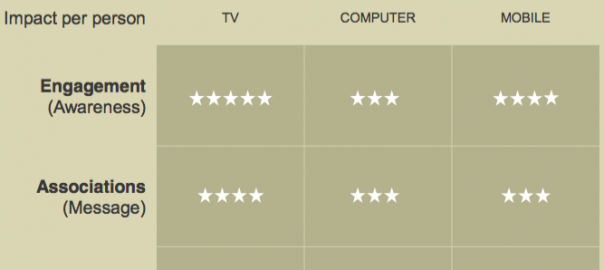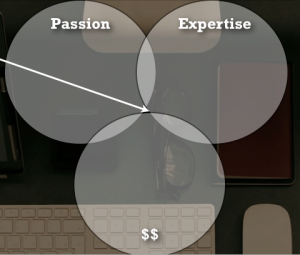Around this time last year, we wrote about how video and email will go hand in hand in 2015, and this year we’re going to share why it will (and should) in 2016 as well. An awesome report by the folks at Millward Brown called the “AdReaction Video Study” explored “how, where and why multiscreen users in 42 countries are viewing video.” They interviewed 13,500 multiscreen users from 42 different countries in the age range from 16-45, and we’re happy to share their findings – which only support why the friendship between video and email will get stronger.
While we’re going to focus on the growth of mobile video viewing, it’s worth noting that half of video viewing is still on TV, with 32% of viewers watching live, and 18% watching digital (103 minutes altogether). The other 50% is divvied up between the computer, tablet and smartphone – with smartphone accounting for 22% of digital viewing time (45 minutes of daily viewing), the tablet taking 10%, and computer taking up 18%. That number (45 minutes) has been on the rise, and it sheds light into the fact that people are consuming more and more digital video content on their smartphones, both on the go and in-house. This trend is similar to email, as the number of people that check their emails on their smartphones has increased year to year. This can be said about all age groups.

The youth (16-24) are taking video viewing on their smartphones to another level, watching more content there than the other age groups in the study – 25-34 and 35-45. That said, many in the youngest age group also watch live TV, as it placed in second, followed by on demand and computer. The older age groups watch more live TV than their youthful counterpart – as many as 65% of 25-34 year olds watch live TV, and as many as 75% in the age group of 35-45 do so as well. A trend for all age groups is the lack of video viewing on their tablets, as tablet video viewing only reached as high as 22% for all age groups.

One of the best parts about video targeting is that consumers look at it positively, and prefer it. In fact, it’s extremely effective to target consumers based on their interests (passions and hobbies), and the brand they like or follow. See more below:

Unsurprisingly, the study found that most video viewing is done at home. This suggests that targeting your audience at night with a video in your email might increase viewership as they will have more time to take a look at it after work.

Now we’re going to talk about video ads, and how they are received. Their study showed that most people react more positively to ad on live TV, this is perhaps because TV ads are to be expected by consumers and so ingrained in the TV experience. Study respondents reacted most negatively to video ads on smartphones, perhaps because the smartphone is supposed to offer one a more personal experience than live TV. Due to this, they may feel that it is a bit more of an intrusion. The study confirmed this as well (see image two below). That said, there wasn’t too much of a difference between the perception of ads on the computer, tablet and smartphone.


Some good news for those that are looking to take advantage of video in email is that users find extremely positive experiences in mobile app rewards, and skippable pre-roll ads. This means that if one were to display video within email and include some rewards and incentives for watching it, not only would an email recipient watch your video, but they’d view the experience more positively for being rewarded to do so.

A good email campaign requires that its video is impactful, which means that the video’s content must be worthwhile. It’s a known fact that email and good content make a great partnership, so if you don’t have the right content, you’re going to have a bad email marketing campaign. But what makes good content? what do people want to see in your video? What’s effective? What do the people want? …Well, according to the AdReaction study respondents, marketers need to add humor to their marketing efforts. 37% of survey respondents declared that they would be less likely to skip an ad if it were humorous. 30% said they wouldn’t skip an ad if the content targets their interests. Echoing what we mentioned earlier, 29% of those in the study said that they want incentives, such as coupons or rewards points for viewing ads, and that same percentage said they would watch ad content if it is from a brand they are interested in. 25% said that just the design of an ad would be enough to prevent them from skipping it – and we’ve stressed this before, a great user experiences is always vital.

Now, a couple more words of wisdom: You can create ads within an email that are engaging, and that ask questions that require a clickable response. That said, it’s about asking the right questions and doing so within the first few seconds of your video, otherwise a viewer might be more resistant to responding or engaging. Furthermore, brand integration in the first few seconds of your video is vital, and shorter ads/video are always better. See below for how TV, Computer and Mobile stack up in terms of impact per person, and try to create campaigns that speak to all three mediums 🙂

(83)






